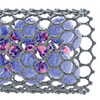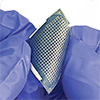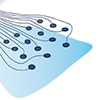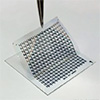Showing Spotlights 1 - 8 of 262 in category All (newest first):
 Researchers develop flexible, colorful films made entirely from cellulose, combining the optical properties of nanocrystals with the strength of nanofibers for sustainable electronics.
Researchers develop flexible, colorful films made entirely from cellulose, combining the optical properties of nanocrystals with the strength of nanofibers for sustainable electronics.
Jul 22nd, 2024
 Researchers develop carbon nanotube transistors filled with perovskites, achieving low power consumption and high performance for next-generation electronics applications.
Researchers develop carbon nanotube transistors filled with perovskites, achieving low power consumption and high performance for next-generation electronics applications.
Jul 9th, 2024
 Researchers develop versatile paper-based electronic devices demonstrating both neuromorphic computing capabilities and physically unclonable functions for security applications.
Researchers develop versatile paper-based electronic devices demonstrating both neuromorphic computing capabilities and physically unclonable functions for security applications.
Jun 27th, 2024
 Researchers have created a 3D printable conductive hydrogel that can be extruded directly onto skin to form high-performance wearable electrodes with enhanced signal quality and stimulation efficiency.
Researchers have created a 3D printable conductive hydrogel that can be extruded directly onto skin to form high-performance wearable electrodes with enhanced signal quality and stimulation efficiency.
Jun 18th, 2024
 Researchers create fully memristive neuromorphic chip integrating trainable dendritic neurons and high-density RRAM, enabling energy-efficient brain-inspired computing architectures.
Researchers create fully memristive neuromorphic chip integrating trainable dendritic neurons and high-density RRAM, enabling energy-efficient brain-inspired computing architectures.
May 24th, 2024
 Researchers have developed 3D printable conducting polymer hydrogels for implantable bioelectronics, enabling long-term electrophysiological monitoring and modulation of organs.
Researchers have developed 3D printable conducting polymer hydrogels for implantable bioelectronics, enabling long-term electrophysiological monitoring and modulation of organs.
May 23rd, 2024
 Scientists have developed a highly deformable, adhesive electronic hydrogel inspired by amoebas that could enable customizable epidermal electronics.
Scientists have developed a highly deformable, adhesive electronic hydrogel inspired by amoebas that could enable customizable epidermal electronics.
May 22nd, 2024
 Researchers printed high-performance organic transistor arrays and logic circuits with an amorphous polymer semiconductor, achieving 100% yield, excellent uniformity, and the highest reported density of 100 printed transistors per square centimeter.
Researchers printed high-performance organic transistor arrays and logic circuits with an amorphous polymer semiconductor, achieving 100% yield, excellent uniformity, and the highest reported density of 100 printed transistors per square centimeter.
May 21st, 2024
 Researchers develop flexible, colorful films made entirely from cellulose, combining the optical properties of nanocrystals with the strength of nanofibers for sustainable electronics.
Researchers develop flexible, colorful films made entirely from cellulose, combining the optical properties of nanocrystals with the strength of nanofibers for sustainable electronics.
 Subscribe to our Nanotechnology Spotlight feed
Subscribe to our Nanotechnology Spotlight feed





